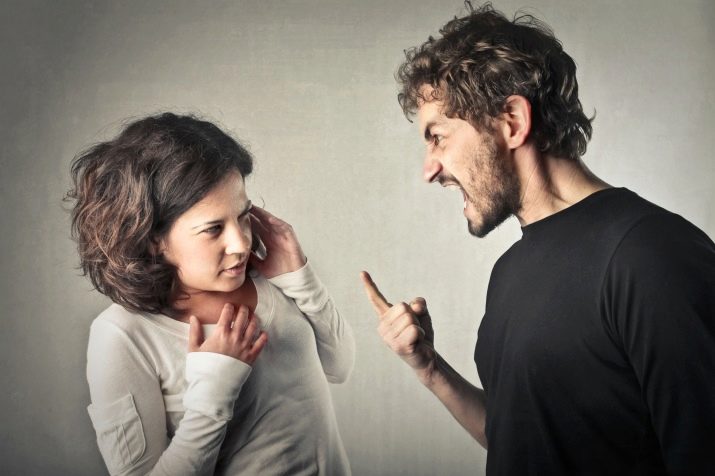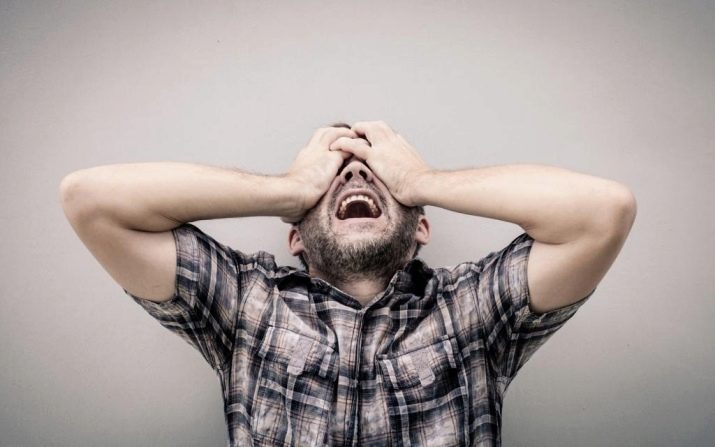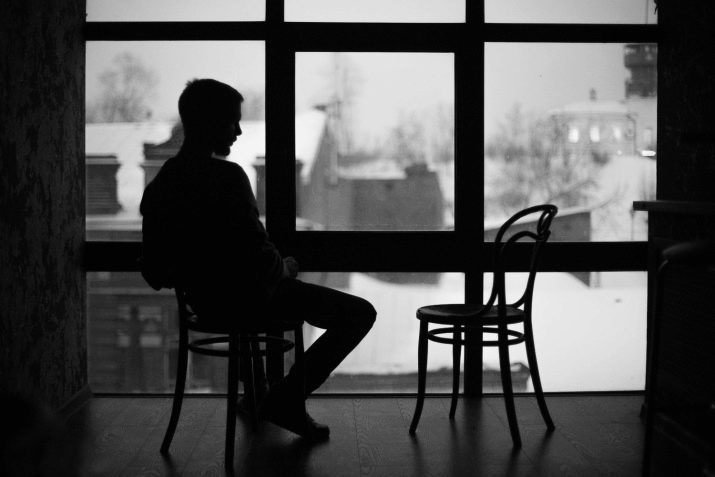Overview of Stress Stages

The modern rhythm of life contributes to the rapid change in living conditions. Stress is the body's ability to respond to intense stimuli and adapt to changing circumstances. The reaction to a stressful situation has some regularities. Experts distinguish 3 stages, successively replacing each other. These are the anxiety phase, the resistance phase, and the exhaustion phase.

Description of the first stage
In psychology, it is customary to use the classification developed by the Canadian scientist Hans Selye. He called the initial reaction of a person at the moment of a stressful situation a state of anxiety. At this stage, anxiety prevails over other feelings. The body is preparing for defense or escape.
The anxiety stage is a state of arousal when the body responds to a stressor. At the initial stage, the body adapts to new conditions in a tense environment. The response to anxiety begins with the mobilization of all protective functions.

The first stage is characterized by the strengthening of vital systems: attention and memory improve, the levels of perception, touch, thinking increase. A large amount of hormones are injected into the blood to stabilize the general condition. The majority show aggression and rage, increased irritation, restless sleep, depression. The subject ceases to control his thoughts and actions.
The earliest signs of stress syndrome are psychosomatic signals. The person may periodically tap the table with their fingers or the floor with their feet. Some people begin to shake their knees or hands.Someone periodically bites their lips, wrinkles their nose, often swallows saliva.
Tic-like spasms stretch lips in a grin. Many have difficulty breathing and excessive sweating.

The most rapid reaction to the manifestation of a stressful state is unconscious smoking. The number of cigarettes that a smoker uses on a daily basis doubles. Some begin to abuse alcohol. Someone has a desire to constantly stroke or wind the hair on a finger, button or unbutton the top button on the clothes, twist it. Some people report changes in gait.
The subject's appetite is impaired, self-control is weakened, and the ability to follow his thoughts and actions is lost. The man is confused. The feeling of constant anxiety and growing panic leads him to imbalance: an emotional and active individual closes in on himself, and a calm one shows irascibility and aggression; some refuse to eat entirely, others begin to eat even more. Many rip off evil on their household members, allowing rude antics in relation to their loved ones, often insult them.

During this period, the internal reserves of the body are turned on, which begins to function with great stress. The individual is looking for ways to solve the problem and copes well with the load that has piled on him. At this stage of the development of stress, a person can think quickly, make the right decisions and do the right things. The forces are still being spent sparingly.
If at this phase the process dies out, then it hardens, and does not destroy the person. Mobilizing all forces to fix the problem increases stress resistance. Sometimes the manifestation of a natural reaction in the form of a fight or some other action completely relieves the personality of a stressful state. If the solution to the problem is delayed, then the next stage in the development of stress begins.

All about the second phase
After the completion of the first stage, the body's defenses are strengthened. The general adaptation syndrome at this stage is due to the increased release of stress hormones by the subject, the ability of a living organism to adapt to the changed environment and the mobilization of internal resources.
In the classification of Hans Selye, the second stage is designated as the stage of resistance (resistance). The characteristic of this period is reduced to the adaptation of the existence of the individual in the current situation and resistance to it. At this moment, there is a high level of physiological arousal of the personality.

The second phase is characterized by a decrease in the psychological manifestations of stress. The subject, who has adapted to the changes, normalizes parameters that are out of balance and out of control at the first stage of resistance to imbalance. A new burst of energy dulls irritability and depressive mood. The level of anxiety, aggressiveness and excitement decreases. All body systems are mobilized.
The inclusion of adaptive mechanisms contributes to the normalization of the general condition. Vigor and adequacy return to the person. The body works in a relatively calm mode. At this time, it is very important to find motivation to be able to cope with an urgent problem.
When the stressful situation ceases, all body functions are gradually restored. The person feels empty and tired. He may become drowsy.

With a lack of internal resources, a deterioration in well-being occurs. The effect of the stressor often reappears. Under such circumstances, the emotional background decreases. The person may become discouraged or panic-stricken. An individual with a weak type of nervous system finds it difficult to cope with growing fears and anxiety. The body works to its limits.The adaptation process requires a lot of tension in the physical and emotional spheres, because the adaptation mechanism does not work.
If the stressful situation continues, and the body can no longer maintain the stage of resistance, then the next stage begins.

Features of the third stage
Psychologists pay attention to signals indicating the transition of a stress state from a moderate to a stronger level:
- the inclusion of a defensive position of the subject is most often a game for the audience or persuasion, leading to low self-esteem and self-flagellation;
- minimizing concentration of attention often leads to absent-mindedness, slovenliness or making erroneous decisions;
- loss of business qualities contributes to the emergence of difficulties in performing the planned actions;
- An arrogant and dismissive attitude towards other people can appear due to the interpretation of any disagreement as an attempt to humiliate the dignity and shake the authority of a person in a stressful situation.

If the stressor persists, the next phase begins, characterized by depletion of the nervous system. Chronic increased activity of the body leads to the loss of its resistance. In the fight against distress, the inner resources of the personality have been exhausted. The individual feels his own powerlessness and hopelessness of the situation. Melancholy takes possession of him. To achieve the goal, forces begin to be expended uneconomically. The third stage can lead to the development of personality deformities and mental disorder.

If a person gets used to the new atmosphere, but the body finds it difficult to adapt to other conditions, changes occur in the mental state of the individual. Subject is unable to cope with factors causing the disorder. After an unsuccessful attempt at adaptation, the individual loses physical strength. Depletion of the organism sets in, which acquires vulnerability to disease and even death. This phase goes through 2 stages:
- the disorder contributes to a decrease in efficiency, the appearance of difficulties in finding a way out of the prevailing circumstances, the impossibility of adequately assessing the situation and making decisions, replacing creative thinking with a simple repetition of action algorithms;
- destruction leads to lethargy and numbness, as a result of which it is difficult for a person to concentrate on important points and grasp the essence of conversations or business.
As a result, a person cannot find a place for himself, acts erratically and commits rash acts. Reactions to a stressful situation are individual.

The degree of their manifestation depends on the personality traits. Many retreat into themselves and are silent. They are characterized by isolation and sullenness. In others, on the contrary, speech activity increases.
Emotional agitation can lead to inappropriate breakdowns. Sometimes the perception of the surrounding reality is disturbed. The subject can look for shortcomings from his interlocutors, conduct meaningless disputes with them.
The third phase is somewhat reminiscent of the first stage: a person's feeling of anxiety resumes, a guilt complex arises, depression develops again. A distinctive point is that at the third stage, the subject loses the ability to mobilize his forces. The individual can be haunted by nervous breakdowns, panic attacks. He often plunges into deep depression. This leads to the appearance of somatic disorders, the emergence of serious illnesses.

At stage 3, immunity is noticeably reduced, the cardiovascular system suffers, diseases of the gastrointestinal tract occur, the pupils dilate, skin rashes and wrinkles appear, the condition of the hair, nails and skin worsens. Bodily changes are called physical arousal. The most common symptoms are headaches, tension at the base of the neck, epigastric discomfort, and chronic constipation.
With continued exposure to the stressor, complete demoralization often occurs. The subject resigns himself to defeat, shows indifference. He doesn't want to solve his problems anymore. The man is broken.

At the stage of exhaustion, stress dynamics are distinguished by their irreversibility. A person cannot do without outside help. He needs to see a psychologist or psychotherapist. Complex therapy includes psychological support, taking sedative medications, changing your daily routine and lifestyle.
Some of the best helpers in dealing with stressors are daily walks in the fresh air and exercise.








